Crocodiles, often perceived as sinister swamp dwellers, exhibit a fascinating array of behaviors underwater that defy common expectations.
This exploration delves into these peculiar actions, shedding light on the enigmatic underwater world of crocodiles. What compels these ancient reptiles to act in ways that appear strange or even mythical?
Through this journey, we unravel the mysteries behind their actions, offering a glimpse into their complex lives.
From their intricate hunting methods to their unique adaptations, discover the secrets of crocodiles beneath the surface.
Silent Ambush Predators
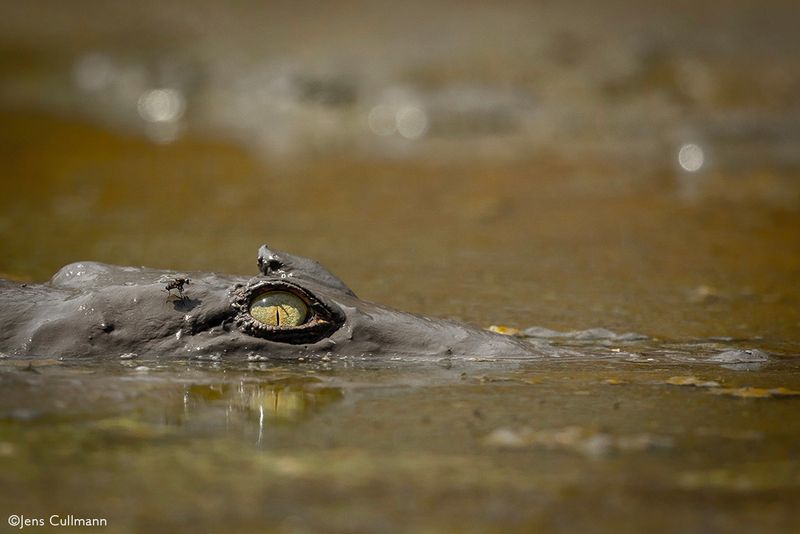
Underwater, crocodiles transform into stealthy predators. They lie motionless, blending seamlessly with their environment. This camouflage helps them stalk prey without detection. Unlike other animals, crocodiles rely on patience and precision.
Their sensory organs, including specialized skin sensors, detect vibrations, alerting them to nearby movement. This ability allows them to strike with remarkable speed and accuracy.
Surprisingly, despite their size, their movements underwater can be quite graceful, akin to a ballet dancer. This elegance enhances their efficiency as hunters, making them formidable even in murky waters.
Myth of Drowning Behavior

Crocodiles are often mistakenly thought to ‘drown’ when they disappear underwater, a myth fueled by their ability to stay submerged for extended periods.
Their nostrils close tightly, allowing them to hold their breath and reduce buoyancy. These adaptations enable them to explore depths without surfacing.
Interestingly, their bodies are designed to conserve oxygen, which is why they can remain hidden for so long. This ‘drowning’ misconception is merely a testament to their remarkable breath-holding capacity. By controlling their heart rate, they maximize their underwater endurance.
Unique Tail Propulsion

With a tail that serves as both rudder and propeller, crocodiles navigate underwater with impressive agility. This muscular appendage provides thrust, propelling them forward with minimal effort.
Their movement resembles that of a fish, showcasing their evolutionary adaptation to aquatic life. This tail-driven propulsion allows for sudden bursts of speed, crucial for capturing prey.
Interestingly, their tail not only aids in swimming but also assists in maintaining balance and direction. This multifaceted functionality highlights their extraordinary adaptation to life both in and out of water.
Mysterious Vocalization
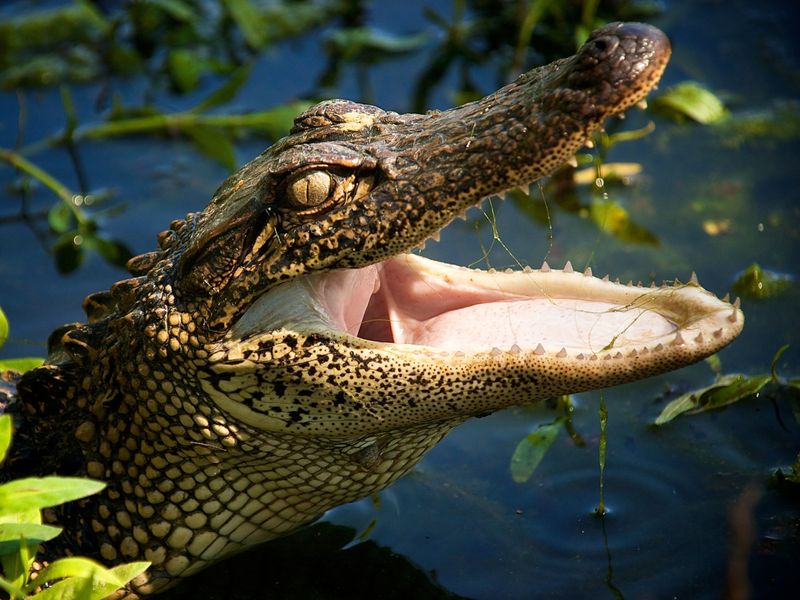
Crocodiles are known for their eerie, underwater vocalizations. These sounds, ranging from grunts to bellows, play a vital role in communication.
Underwater, these vocalizations can travel further, penetrating the dense aquatic medium. This ability is crucial during mating seasons and territorial disputes.
Such vocal behaviors highlight their complex social structure, often overlooked due to their solitary reputation. These sounds, echoing through the water, serve as a reminder of their intelligence and adaptability to various environments.
Regulating Body Temperature
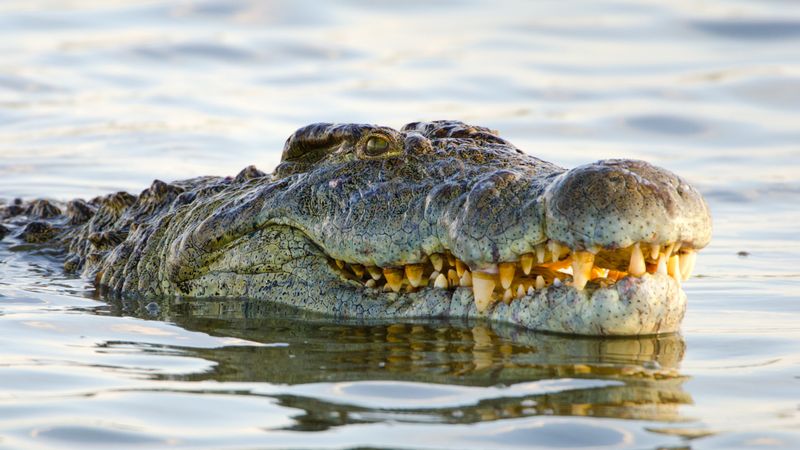
Temperature regulation is vital for crocodile survival. By submerging in water, they avoid overheating. The water acts as a coolant, stabilizing their body temperature.
Conversely, by basking in the sun, they absorb necessary warmth. This dual strategy allows them to manage energy efficiently.
Their ability to thermoregulate demonstrates their adaptability to changing environments. This balance is crucial, especially in varying climates, ensuring survival across diverse habitats. Their behavior exemplifies an advanced understanding of their ecological needs.
Sensory Adaptations

Crocodiles possess unique sensory adaptations that enhance their underwater perception. Their skin is dotted with sensory pits, sensitive to changes in water pressure and vibrations.
These adaptations allow them to detect prey and potential threats, even in darkness. Their acute senses are complemented by excellent night vision, further enhancing their hunting prowess.
Such adaptations reveal an evolutionary mastery of their environment, allowing them to thrive as apex predators. This sensory sophistication underscores their efficiency and survival skills in complex aquatic ecosystems.
Breath-Holding Mastery
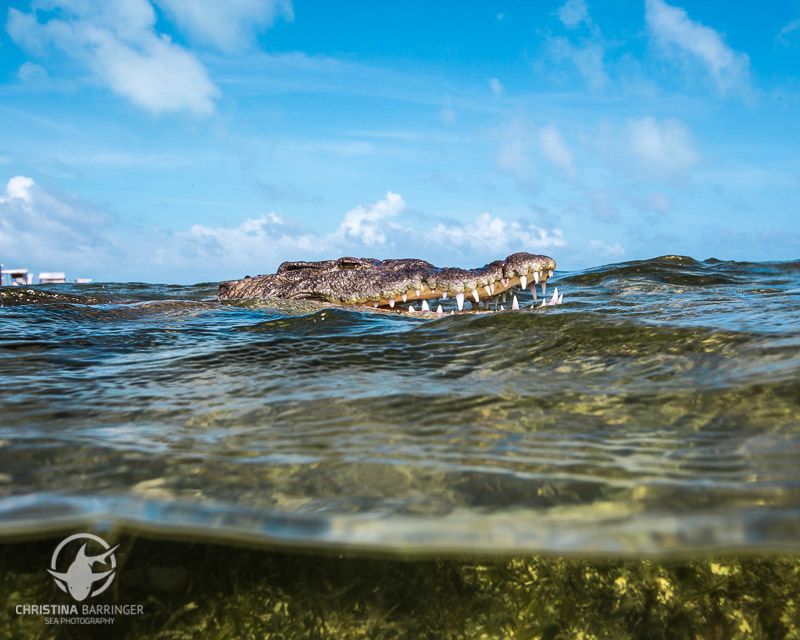
Crocodiles are masters of breath-holding, a skill essential for their underwater lifestyle. They can hold their breath for up to an hour, adjusting their metabolism to conserve oxygen.
This ability is facilitated by their unique circulatory system, allowing blood flow to be rerouted. Such physiological adaptations reduce the need for frequent surfacing.
Their breath-holding prowess is not merely a survival tactic but a testament to their evolutionary ingenuity. This capability underlines their position as one of nature’s most efficient underwater inhabitants.
Underwater Communication Signals
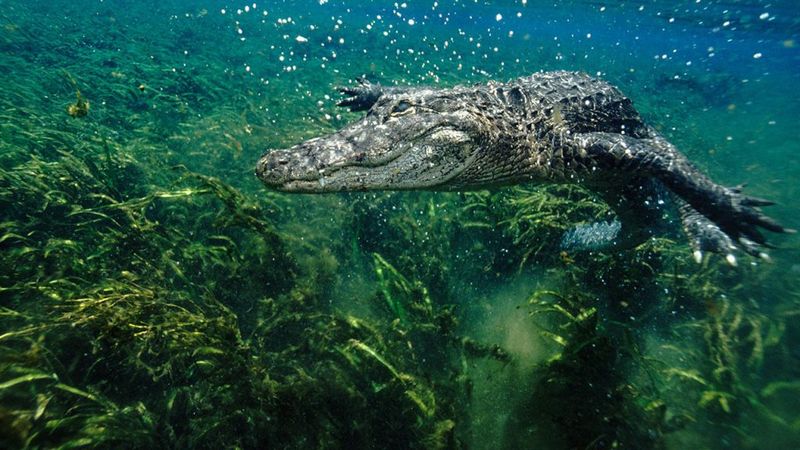
Crocodiles have a unique way of communicating underwater using bubble patterns. These patterns serve as signals that convey different messages to other crocodiles. Imagine a silent conversation carried out through the rhythmic release of bubbles, each sequence having its own meaning. In the murky depths, where visibility is low, these signals become essential for interaction and navigation.
In this mysterious world, bubbles are more than just air; they are a language. Crocodiles utilize these underwater signals to maintain social bonds, warn of danger, or even attract mates. Their bubble communication is a testament to their adaptability and intelligence.
Submerged Hunting Techniques
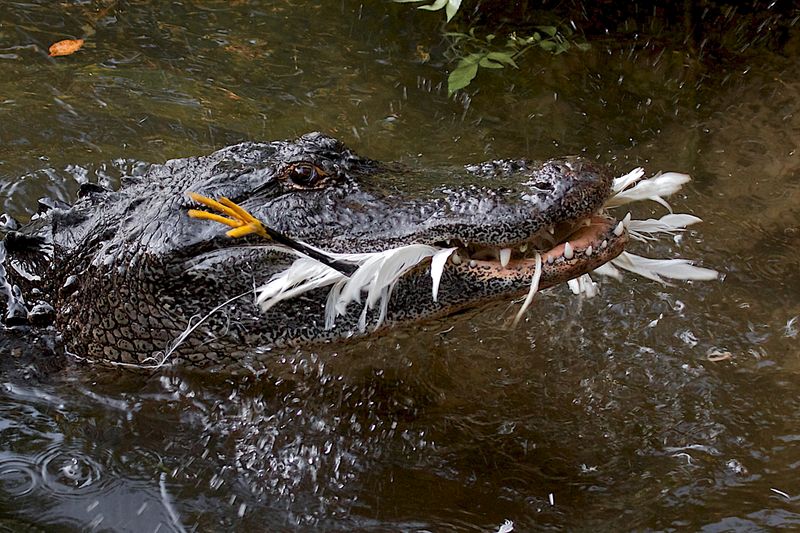
Crocodiles are masters of stealth, employing submerged hunting techniques that make them formidable predators. With skin that blends seamlessly into the aquatic environment, they can lie in wait for hours. Their patience is matched only by their precision. When the moment is right, they strike with explosive speed, capturing unsuspecting prey.
This stealthy behavior is not just about physical prowess but also strategy. By observing and adapting to their environment, crocodiles ensure the highest chance of success. Studying these techniques uncovers the depth of their hunting intelligence, highlighting their role as apex predators.
Aquatic Playfulness
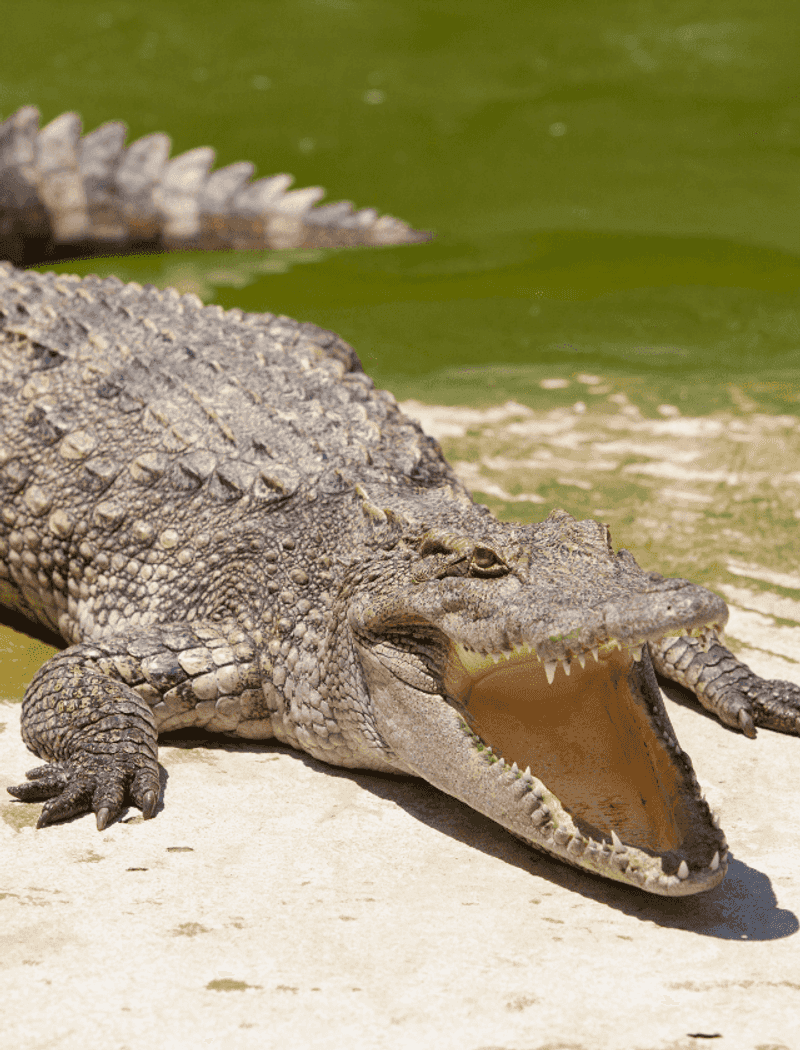
Though often seen as fierce predators, crocodiles also exhibit playful behaviors underwater. Juvenile crocodiles, in particular, engage in rolling and tumbling in the water, an activity that seems to be more than mere practice for hunting.
This playful behavior is a critical part of learning and social interaction. Through these activities, young crocodiles develop motor skills and social bonds that are crucial for survival. Observing play among crocodiles offers a glimpse into a softer side of these ancient creatures, revealing an unexpected complexity in their social structure.

